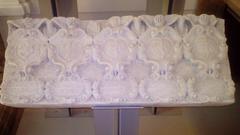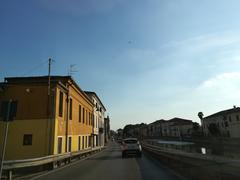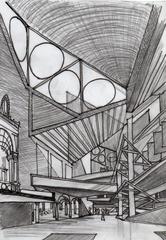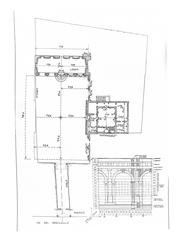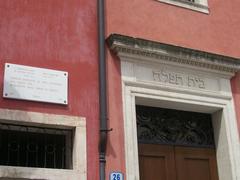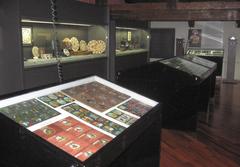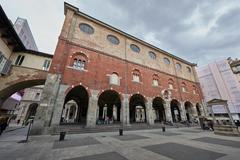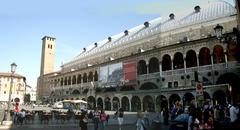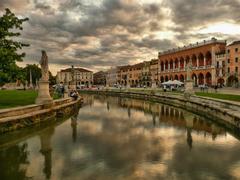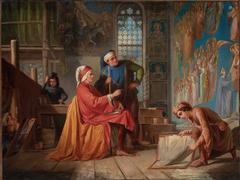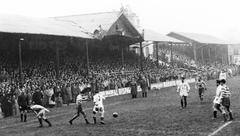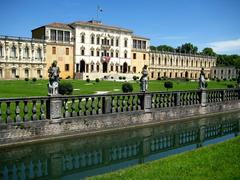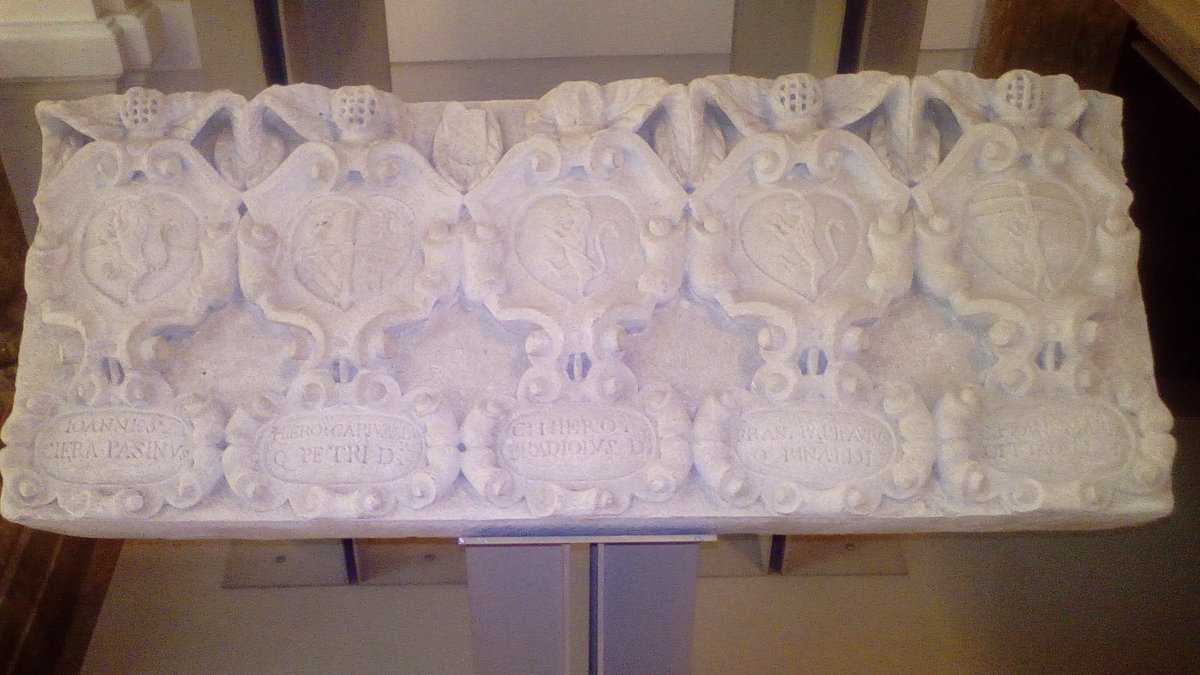
Visiting Palazzo Zuckermann: Hours, Tickets, and Historical Insights
Date: 24/07/2024
Introduction
Palazzo Zuckermann, located on Corso Garibaldi in Padua, Italy, stands as an eminent historical and architectural landmark. Constructed between 1912 and 1914 by Milanese architect Filippo Arosio, this illustrious building was commissioned by Enrico Zuckermann, a wealthy industrialist (Nomads Travel Guide). The palace’s design is a striking blend of neoclassical and Liberty styles, the latter being the Italian version of Art Nouveau (Padova.com). Over the years, Palazzo Zuckermann has transitioned from a private residence to a public building, encapsulating the dynamic history and cultural evolution of Padua. Today, it forms part of the Eremitani Civic Museums complex, housing the Museum of Applied and Decorative Arts and the Museo Bottacin, each representing rich facets of Padua’s artistic and historical heritage (In Italy Wiki). This comprehensive guide aims to provide detailed insights into its history, visiting hours, ticket information, and nearby attractions, making it an essential read for anyone planning to explore this magnificent site.
Table of Contents
History of Palazzo Zuckermann
Origins and Construction
Palazzo Zuckermann was commissioned by the wealthy industrialist Enrico Zuckermann and constructed between 1912 and 1914 by the Milanese architect Filippo Arosio (Nomads Travel Guide). The building’s design reflects the neoclassical style with elements influenced by the Liberty style, the Italian version of Art Nouveau (Padova.com).
Architectural Evolution
Over the years, Palazzo Zuckermann has undergone numerous renovations and restorations, yet it has miraculously retained its original architectural integrity. The facade features intricate stone carvings, arched windows, and a grand entrance, hinting at the grandeur that lies within (In Italy Wiki). The interior boasts a series of opulent halls adorned with frescoes, tapestries, and marble sculptures, each telling a unique story of the Zuckermann family’s legacy and the history of Padua itself.
The Zuckermann Family
The Zuckermann family, renowned for their banking and mercantile activities, played a pivotal role in shaping Padua into the vibrant and prosperous city it is today. Enrico Zuckermann, the palace’s commissioner, was a prominent industrialist whose wealth and influence were instrumental in the palace’s construction. His descendants, including Elena Zuckermann, a prominent patron of the arts, and Francesco Zuckermann, a respected scholar and diplomat, continued to contribute to the city’s cultural and intellectual life (In Italy Wiki).
Transition to Public Use
In the 20th century, Palazzo Zuckermann transitioned from a private residence to a public building. It became the main post office building for Padua, reflecting the city’s modernization and the palace’s adaptability to new functions (Wikipedia). This period marked a significant shift in the building’s role within the community, transforming it from a symbol of private wealth to a public utility.
Integration into the Civic Museum Complex
Since 2005, Palazzo Zuckermann has been part of the Eremitani Civic Museums complex, housing the Museo di Arti Applicate e Decorative (Museum of Applied and Decorative Arts) on the first floor and the Museo Bottacin on the second floor (Padova.com). These museums showcase a vast collection of artifacts, including over 2,000 objects ranging from glassware to ceramics, jewelry, and furniture, as well as an extensive coin collection (The Travel Folk).
Cultural Significance
The Palazzo Zuckermann stands as a testament to the Zuckermann family’s passion for art and culture. The palace’s elaborate ceiling paintings, meticulously crafted furniture, and stunning frescoes create a visually captivating narrative that transports visitors to a world of art and history (In Italy Wiki). Renowned artists collaborated to create these masterpieces, each brushstroke contributing to a cohesive and harmonious composition.
Resilience Through Time
Despite the ravages of time and wars, Palazzo Zuckermann has emerged as a symbol of resilience and the enduring spirit of Padua. The palace has withstood numerous challenges, maintaining its architectural splendor and cultural significance. Today, it stands as a cultural hub, welcoming visitors from around the world to marvel at its beauty and immerse themselves in the rich history of the Zuckermann family and the city of Padua (In Italy Wiki).
Modern-Day Attractions
Practical Information for Visitors
Palazzo Zuckermann is open to the public from Tuesday to Sunday, 10:00 AM to 7:00 PM. Admission fees are €10 for adults and €8 for reduced tickets (Nomads Travel Guide). Combination tickets for both the museum and the Scrovegni Chapel are available for €15, or the museum alone for €11 (The Travel Folk). For more information, visitors can contact the museum at 049 820 56 64 (Lonely Planet).
Nearby Historical Sites
The palace’s location on Corso Garibaldi places it in a richly historic area that includes the Roman Arena, the Scrovegni Chapel, the Church of the Eremitani, and the Museo agli Eremitani, which houses the main art gallery of the Civic Museum of Padua (Lonely Planet). These nearby attractions further enhance the cultural and historical experience for visitors to Palazzo Zuckermann.
FAQ
1. What are the visiting hours for Palazzo Zuckermann? Palazzo Zuckermann is open from Tuesday to Sunday, 10:00 AM to 7:00 PM.
2. How much are the tickets for Palazzo Zuckermann? Admission fees are €10 for adults and €8 for reduced tickets. Combination tickets for both the museum and the Scrovegni Chapel are available for €15, or the museum alone for €11.
3. What are some nearby attractions to Palazzo Zuckermann? Nearby attractions include the Roman Arena, the Scrovegni Chapel, the Church of the Eremitani, and the Museo agli Eremitani.
Conclusion
Palazzo Zuckermann’s rich history, architectural splendor, and cultural significance make it a must-visit destination in Padua. Its transformation from a private residence to a public cultural hub reflects the dynamic history of the city and the enduring legacy of the Zuckermann family. Visitors to the palace can immerse themselves in the art, history, and culture of Padua, making for a memorable and enriching experience.
Call to Action
For more information about Palazzo Zuckermann and other historical sites in Padua, download our mobile app Audiala, check out related posts, or follow us on social media for the latest updates.
